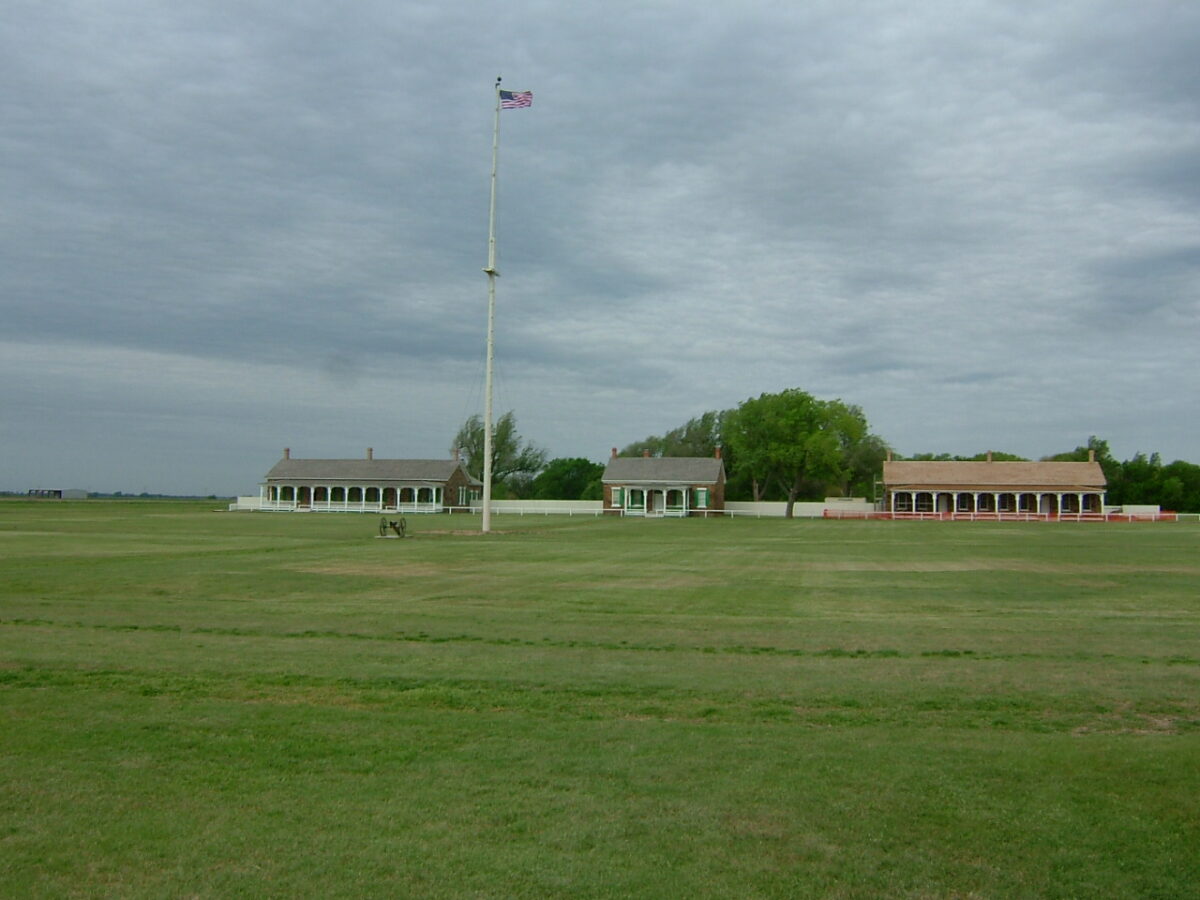Fort Larned, Kansas
Today if you were trying to go from Independence, Missouri. to Santa Fe, New Mexico, you would likely travel on major highways – I70 or I35, to US Highway 50 and 56, and ultimately I25. This 770 mile trip would take about 12 hours driving.
But 200 years ago, this was an entirely different endeavor. Families setting out from Independence in a covered wagon on the Santa Fe Trail would not expect to reach Santa Fe for at least 2 months, and that is if they were able to maintain a pace of 15-18 miles per day. They would travel rain or shine, with most of the family walking beside the wagon to save the animals. That two months didn’t account for the many injuries and obstacles they faced along the way. The journey could take far longer and many never arrived.
Along with wagon train traffic, the Santa Fe Trail was a vital commercial trade route and military highway. To protect travelers and to provide escorts through dangerous sections, the US government commissioned a string of forts. Although some were only temporary, Fort Larned and Fort Union were permanent. Both are now protected as part of the national park system, as is Bent’s Fort (a former trading post).

About Fort Larned National Historic Site
Built in 1860, Fort Larned was situated on the Santa Fe Trail. It has an interesting history. It moved locations a couple of times and also changed names. Originally named Fort Alert, it eventually became Fort Larned, named for the US Army Paymaster General at the time.
Not only did the fort guard commerce and provide a way station for travelers, it played an important role in trying to keep the peace with Indians. In fact, for many years the fort was the place that Indians would come to get their annuities – clothing, food and other necessities promised as part of various treaties. This ended in 1868.
The fort was operational through 1878 when it was finally made obsolete by the coming of the railroad. The site was eventually abandoned and sold, remaining in private hands until 1964 when it became part of the national park system.
The railroad and later, the freeway, bypassed Fort Larned to the north. Today, a visitor to Fort Larned National Historic site will have to go out of their way to get there, making their way to Kansas highway 156.

Visiting Fort Larned National Historic Site
You can visit the original barracks (now a visitor center), the post hospital, bakery and blacksmith shop, commissaries, quartermaster house, officer’s quarters and the commanding officer’s quarters.
It won’t take that long – the site is only 773 acres – but it is interesting and you’ll want to spend a few hours walking around and visiting all the buildings. Close by Fort Larned there is also a preserved section of the Santa Fe trail where you can still see the wagon ruts and imagine what it must have been like 200+ years ago.
Be sure to talk to the rangers and take in the film and exhibits. The history of the American west is tied to this network of trails and the forts that supported them.
Are you trying to visit all the National Parks?
If your goal is to visit them, one or all, we’d love to help you strategize. Give us a call at (480) 609-3978 or drop us a note here. We always enjoy talking with people who share our passion for visiting National Parks, and National Park Units.
#FindYourPark
#SeeAmericaFirst

